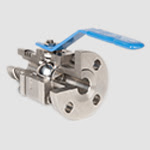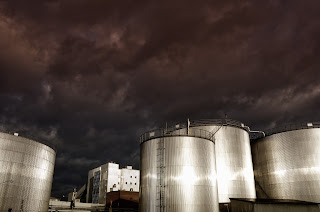Sponsored by M.S. Jacobs & Associates, a manufacturer’s representative and distributor of industrial instrumentation, control valves & process controls. Located in Pittsburgh, Pa. and covering Western Pennsylvania, West Virginia, and New York. Representing top lines in pressure, temperature, level, flow, analytical instruments and industrial valves.
Telephone: 800-348-0089 or MSJacobs.com
Non-Invasive Measurement of Extremely Low Flow Rates
Industrial process measurement and control operations present a continuous stream of challenges to designers, engineers, operators, and equipment manufacturers. The innumerable combinations of environmental, safety, financial, and other concerns have lead to a wide variety of instruments, equipment, and techniques for meeting specific process requirements. A critical element of many industrial processes is the measurement of liquid flow. Matching the best available flow measurement technology or product to an application calls for through knowledge of the process, the medium being measured, and the strengths and limitations of a proposed measurement device. The most current product and application information is available from specialists in flow measurement.
The video illustrates how a special adaptation of ultrasonic flow measurement technology is utilized to measure extremely low flow rates. Specific product information is also included, showing the advantages and specific application ranges of this specialty product from Flexim Americas.
Oxygen or High Purity Service Valve Preparation
 |
| Industrial Ball Valve Courtesy Marwin Valve |
Odorless and colorless, oxygen is concentrated in atmospheric air at approximately 21%. While O2, by itself, is non-flammable, it vigorously supports combustion of other materials. Allowing oils or greases to contact high concentrations of oxygen can result in ignition and possibly explosion. Oxygen service preparation of an industrial valve calls for special cleaning processes or steps that remove all traces of oils and other contaminants from the valve to prepare for safe use with oxygen (O2). Aside from the reactive concerns surrounding oxygen, O2 preparation is also used for applications where high purity must be maintained and valves must be free of contaminants.
Gaseous oxygen is noncorrosive and may be used with a variety of metals. Stainless steel, bronze and brass are common. Liquid oxygen presents unique challenges due to cryogenic temperatures. In this case, valve bodies, stems, seals and packing must be carefully chosen.
Various types of valves are available for oxygen service, along with a wide array of connections, including screwed, socket weld, ANSI Class 150 and ANSI Class 300, DIN PN16 and DIN PN40 flanged ends. Body materials include 316 stainless steel, monel, bronze and brass. Ball and stem material is often 316 stainless steel or brass. PTFE or glass filled PTFE are inert in oxygen, serving as a common seat and seal material employed for O2 service.
Common procedures for O2 service are to carefully deburr metal parts, then meticulously clean to remove all traces of oil, grease and hydrocarbons before assembly. Valve assembly is performed in a clean area using special gloves to assure no grease or dust contaminates the valve. Lubricants compatible with oxygen must be used. Seating and leakage pressure tests are conducted in the clean area, using grease free nitrogen. Specially cleaned tools are used throughout the process. Once assembled, the valves are tested and left in the open position. A silicone desiccant pack is usually inserted in the open valve port, then the valve ports are capped. A warning label about the desiccant pack's location is included, with a second tag indicating the valve has been specially prepared for oxygen service. Finally, valves are individually sealed in polyethylene bags for shipment and storage. Different manufacturers may follow slightly differing protocols, but the basics are the same. The valve must be delivered scrupulously contaminant free.
The O2 preparation of valves is one of many special production variants available to accommodate your special application requirements. Share your valve requirements and challenges with a valve specialist to get the best solution recommendations.
Video Reenactment and Analysis of Industrial Fire and Explosion
 |
| All facilities have some element of risk |
The U.S. Chemical Safety Board, or CSB, is an independent federal agency that investigates industrial chemical accidents. Below, find one of their video reenactments of an explosion that occurred in Texas in 2013, along with their findings regarding the cause of the incident. Check out the video and sharpen your senses to evaluate potential trouble spots in your own operation.
Contact M.S. Jacobs & Associates for any safety related information you may need concerning their lines of industrial and process control products.
New Product: Non-Contact Radar Level Transmitter
 |
| Model R96 Non-Contact Radar Level Transmitter Courtesy Magnetrol |
The company sums up the technical capabilities with their description of the product...
"Virtually unaffected by the presence of vapors or air movement within a vessel’s free space, the two-wire, loop-powered, 6 GHz Radar transmitter measures a wide variety of liquid media in process conditions ranging from calm product surfaces and water-based media to turbulent surfaces and aggressive hydrocarbon media."
The Model R96 level transmitter offers features that combine to deliver a state-of-art instrument for accurate continuous level measurement. A product brochure is included below. Contact application specialists to formulate the right product configuration for your level measurement challenge, or to get more detailed information.
Subscribe to:
Posts (Atom)